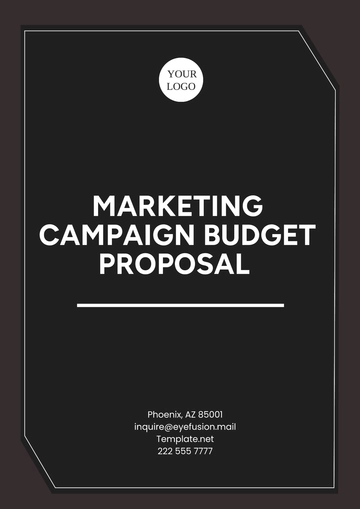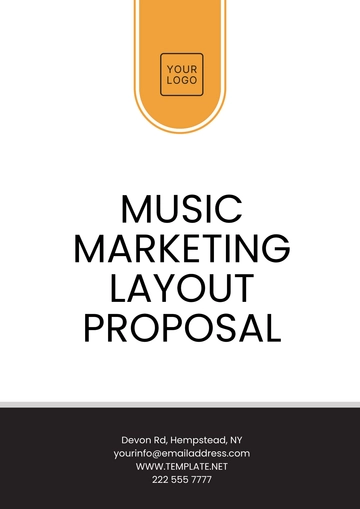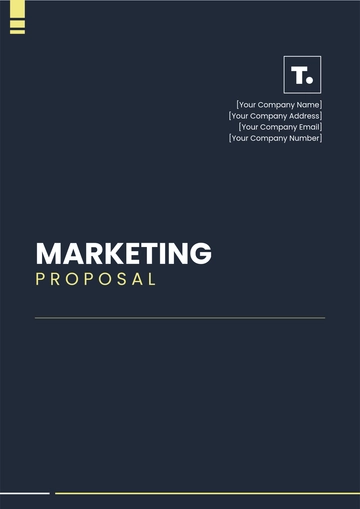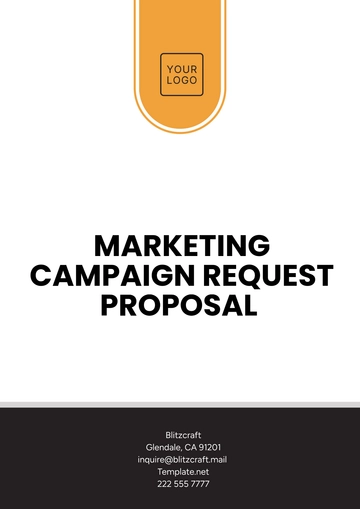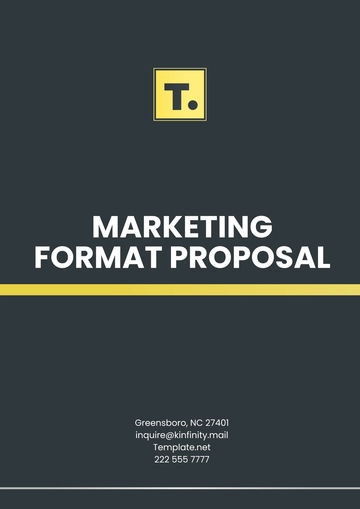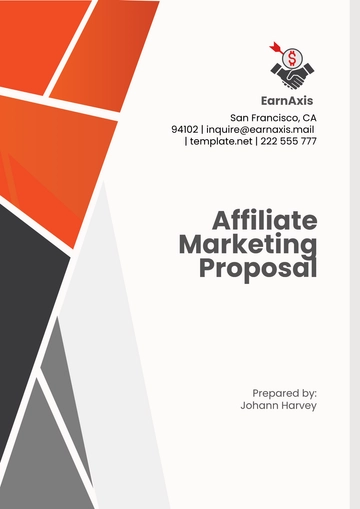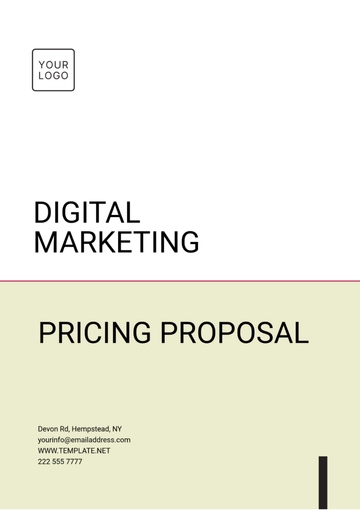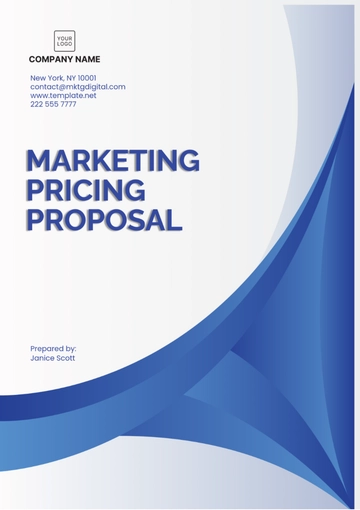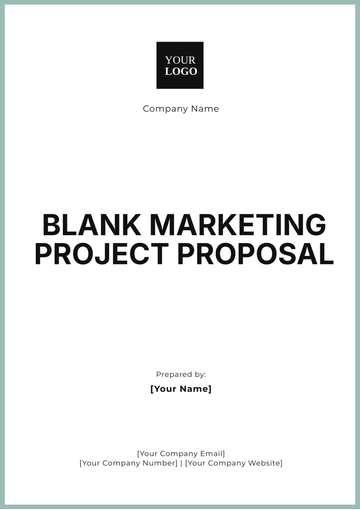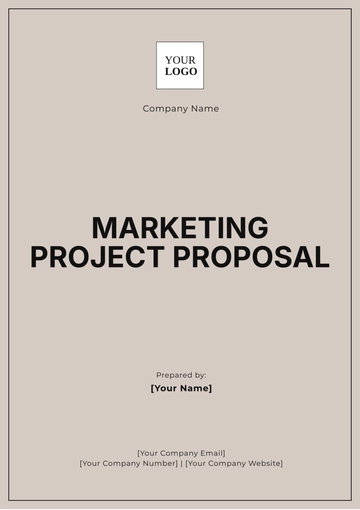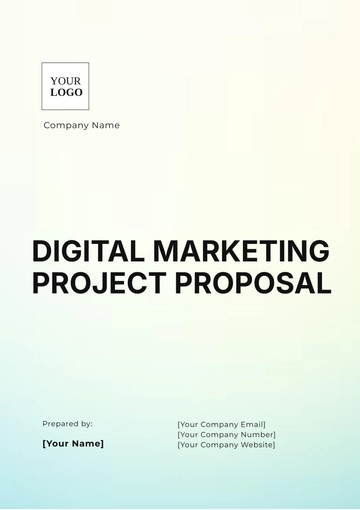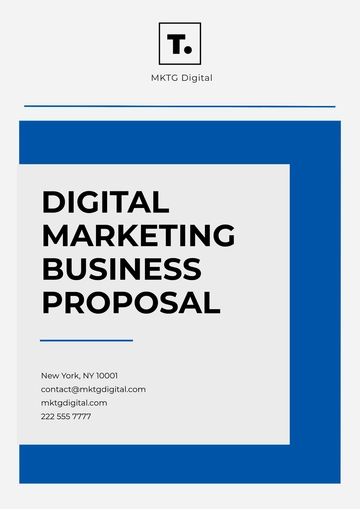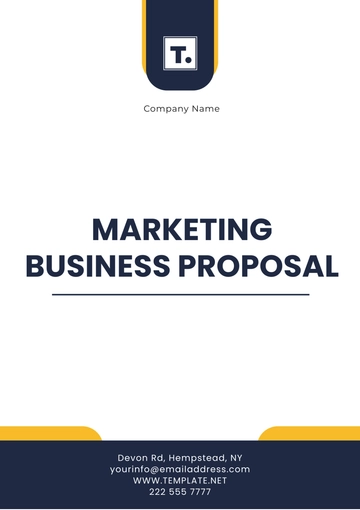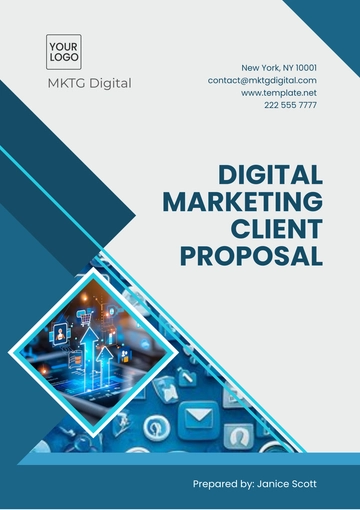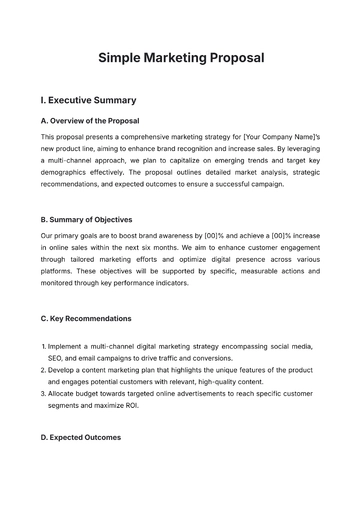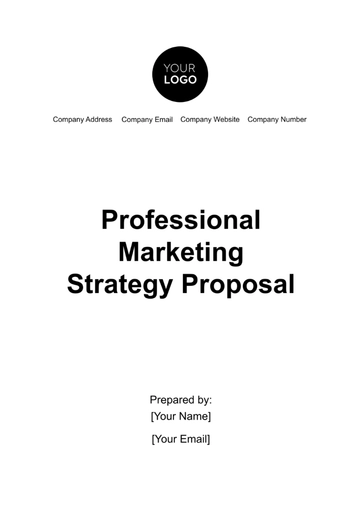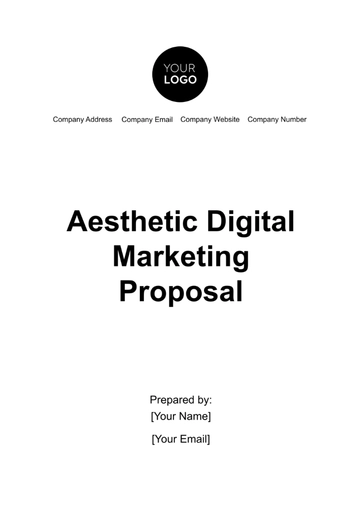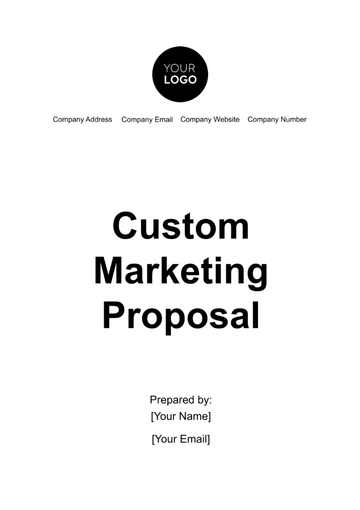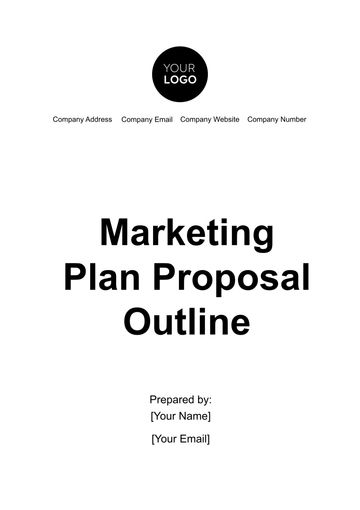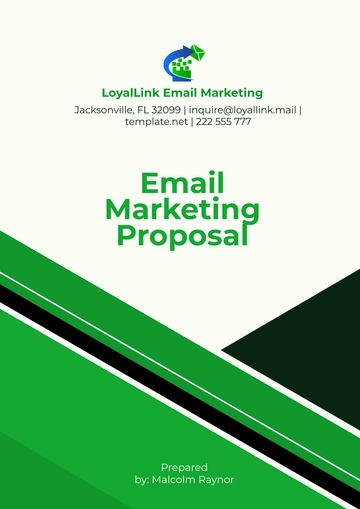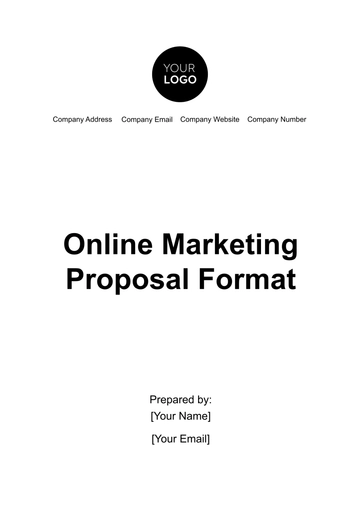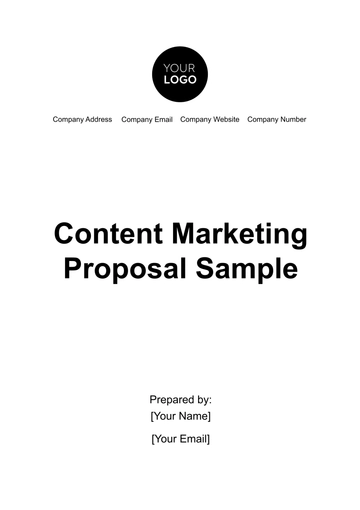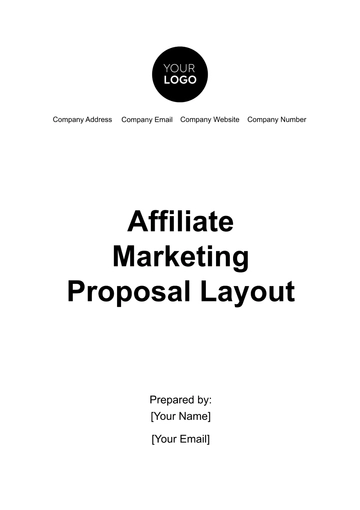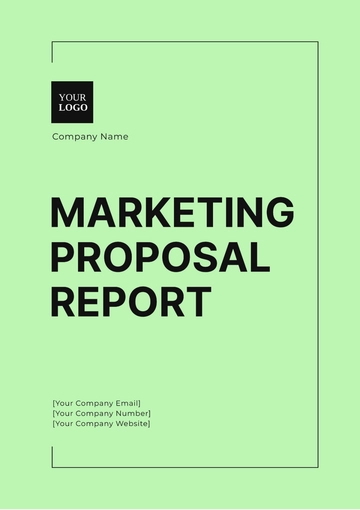Free Spa Marketing Proposal
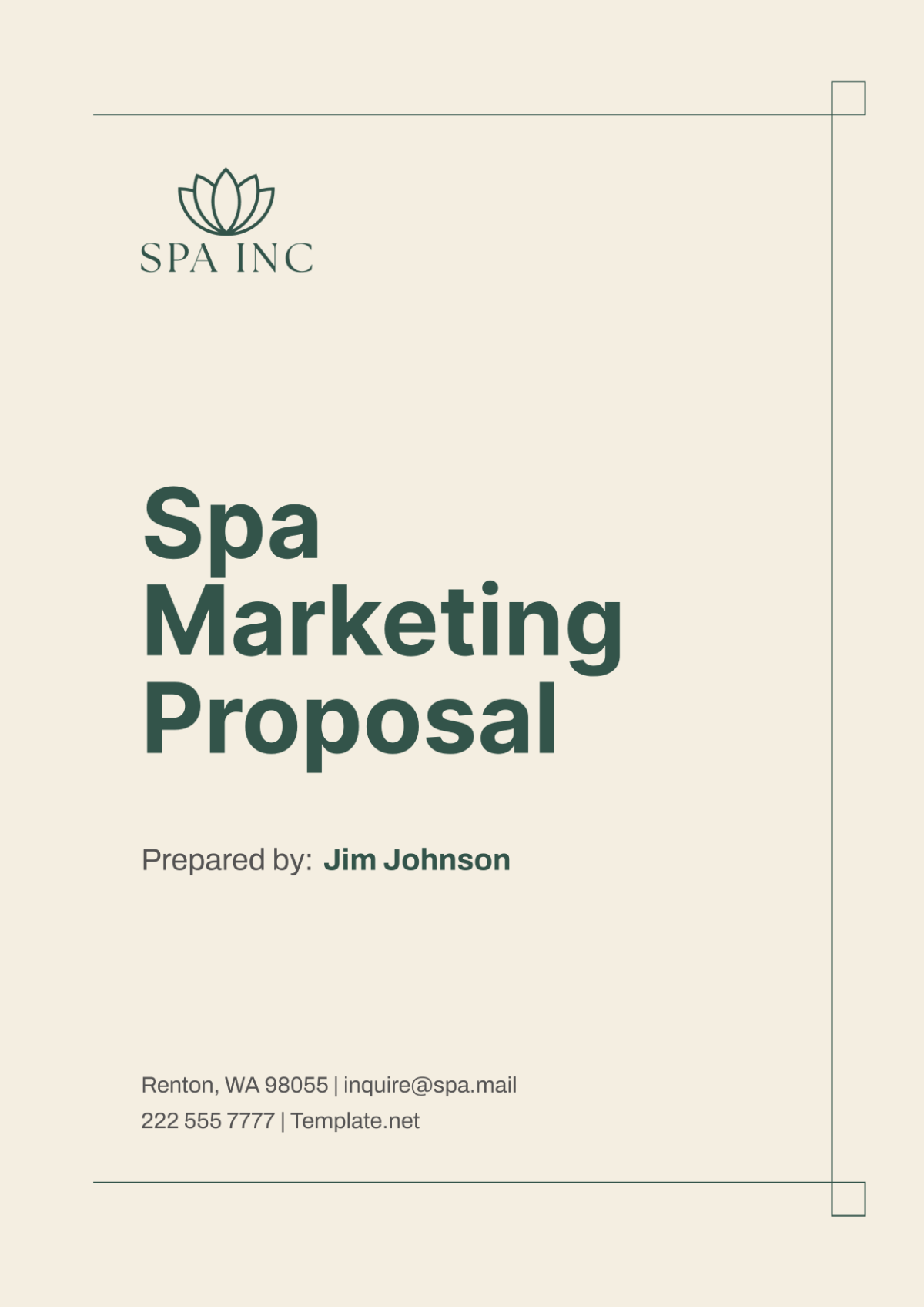
I. Executive Summary
[Your Company Name] is pleased to present this comprehensive marketing proposal aimed at enhancing our brand visibility, attracting new clients, and retaining our loyal customer base. Our marketing plan leverages a combination of digital marketing, traditional advertising, and community engagement to establish [Your Company Name] as the premier spa service provider in the region. This proposal includes an in-depth market analysis, clear marketing objectives, innovative strategies, a detailed budget, and a timeline for execution.
II. Company Overview
[Your Company Name] has built a solid reputation in the wellness industry by providing exceptional spa services tailored to meet the diverse needs of our clients. This section offers an overview of our company’s history, mission, core values, and current market positioning.
Company Information
[Your Company Name]
[Your Company Address]
[Your Company Number]
[Your Company Website]
[Your Company Social Media]
History and Mission
Established in [Year Founded], [Your Company Name] has consistently provided high-quality spa services, fostering a culture of relaxation and wellness. Our mission is to offer unparalleled spa experiences that promote health, rejuvenation, and tranquility. We strive to be the destination of choice for clients seeking premium wellness solutions.
Core Values
Customer First: Prioritizing exceptional service to ensure every client feels valued and pampered.
Quality: Committing to excellence in every aspect of our business, from service delivery to facility maintenance.
Innovation: Continuously integrating modern spa technologies and trends to offer the latest and most effective treatments.
Market Positioning
[Your Company Name] is recognized for its luxurious ambiance, professional staff, and a wide range of services tailored to the specific needs of our clients. Our commitment to quality and customer satisfaction has positioned us as a leading spa in the region.
III. Market Analysis
Understanding the market landscape is crucial for developing effective marketing strategies. This section provides a comprehensive analysis of the spa industry, our target audience, and the competitive environment.
Industry Overview
The spa industry is experiencing robust growth, driven by increasing consumer interest in wellness and self-care. The demand for services such as massages, facials, and holistic treatments is rising as more individuals prioritize health and well-being.
Market Growth: The spa industry is projected to grow by 7% annually over the next five years, with significant increases in consumer spending on wellness services.
Consumer Trends: Key trends include a growing preference for natural and organic products, an increased focus on mental health and stress relief, and a demand for personalized wellness experiences.
Target Audience
Identifying and understanding our target audience is key to tailoring our marketing strategies effectively. [Your Company Name] targets three primary segments:
Working Professionals: Seeking stress relief and relaxation amidst busy schedules.
Individuals Seeking Stress Relief: Looking for therapeutic services to alleviate physical and mental stress.
Beauty Enthusiasts: Interested in maintaining and enhancing their appearance through spa services.
Competitive Analysis
A thorough analysis of our competitors provides insights into their strengths and weaknesses, helping us identify opportunities for differentiation. Major competitors in our area include:
[Competitor 1]: Known for its comprehensive range of services and luxury ambiance, Competitor 1 attracts high-end clients but may have higher price points.
[Competitor 2]: This competitor focuses on holistic wellness and offers a variety of alternative therapies. Their strength lies in a loyal customer base interested in natural and holistic treatments.
[Competitor 3]: Competitor 3 is renowned for its innovative use of technology in treatments and a strong online presence, appealing to tech-savvy clients.
By analyzing these competitors, we can identify gaps in the market and position [Your Company Name] as a distinctive brand offering unparalleled service and a unique client experience.
IV. Marketing Objectives
Our marketing objectives are designed to enhance brand visibility, drive traffic to our website, and increase client engagement and retention. These objectives are specific, measurable, achievable, relevant, and time-bound (SMART), ensuring a focused approach to our marketing efforts.
Primary Objectives
Increase Brand Awareness: Attain a 20% increase in social media followers over the next six months.
Drive Website Traffic: Achieve a 30% increase in monthly website visitors within this fiscal year.
Enhance Customer Engagement: Boost online booking rates by 15% over the next quarter.
Build Customer Loyalty: Increase customer retention rates by 10% over the next year.
Generate Leads and Convert Them into Clients: Generate a 25% increase in leads and convert 10% of these leads into paying clients within six months.
Improve Online Reputation: Achieve a 4.5-star average rating on review platforms within the next year.
Supplementary Objectives
Expand Service Offerings: Introduce new and innovative spa treatments that cater to emerging consumer trends.
Increase Membership Sales: Promote our spa membership program to encourage repeat visits and long-term client relationships.
Enhance Community Engagement: Participate in local events and initiatives to build brand recognition and foster community ties.
V. Digital Marketing Strategies
To achieve our marketing objectives, [Your Company Name] will implement a comprehensive digital marketing strategy that leverages various channels and techniques. This section details our strategies for SEO, social media marketing, content marketing, email marketing, and PPC advertising.
Search Engine Optimization (SEO)
SEO is crucial for improving our online visibility and attracting organic traffic to our website. Our SEO strategy focuses on optimizing both on-page and off-page elements.
On-Page SEO:
Keyword Research: Identify high-traffic keywords related to spa services, such as "spa services," "wellness center," and "massage therapy."
Content Optimization: Ensure that all website content, including blogs, service descriptions, and meta tags, is optimized for targeted keywords.
Technical SEO: Improve site speed, mobile-friendliness, and fix any technical issues that could affect search engine rankings.
Off-Page SEO:
Backlink Building: Acquire high-quality backlinks from reputable websites in the wellness and beauty industry.
Local SEO: Optimize our Google My Business listing and obtain positive reviews to improve local search visibility.
Social Media Marketing
Social media is a powerful tool for engaging with our audience and building brand awareness. Our social media strategy involves creating compelling content and interacting with our followers across various platforms.
Content Creation:
Regular Posts: Share content regularly on platforms like Facebook, Instagram, and Twitter, including updates, promotions, and wellness tips.
Visual Content: Use high-quality images and videos to showcase our spa services and client experiences.
User-Generated Content: Encourage clients to share their experiences on social media and repost their content to build community.
Engagement:
Interactive Posts: Create polls, quizzes, and live sessions to engage with our audience and encourage interaction.
Influencer Partnerships: Collaborate with local influencers to reach a broader audience and gain credibility.
Content Marketing
Content marketing is essential for attracting and retaining clients by providing valuable information and establishing [Your Company Name] as an authority in the spa industry.
Blog Posts:
Educational Content: Publish informative articles on topics such as the benefits of different spa treatments, wellness tips, and skincare routines.
How-To Guides: Create detailed guides on subjects like DIY spa treatments, relaxation techniques, and healthful living.
Customer Testimonials:
Success Stories: Share testimonials from satisfied clients to build trust and credibility.
Case Studies: Highlight specific client experiences and the positive outcomes of our services.
Email Marketing
Email marketing is a cost-effective way to maintain communication with our clients and keep them informed about our services and promotions.
Monthly Newsletter:
Updates and News: Inform subscribers about new services, upcoming events, and spa news.
Exclusive Offers: Provide special promotions and discounts to newsletter subscribers to encourage bookings.
Automated Email Campaigns:
Welcome Series: Send a series of welcome emails to new subscribers introducing them to our services and special offers.
Follow-Up Emails: Send personalized follow-up emails after appointments to request feedback and encourage repeat bookings.
Pay-Per-Click (PPC) Advertising
PPC advertising helps drive targeted traffic to our website through paid search and social media ads.
Google Ads:
Keyword Targeting: Create ads targeting high-intent keywords related to our services.
Ad Extensions: Use ad extensions to provide additional information and increase click-through rates.
Social Media Ads:
Audience Targeting: Use demographic and interest-based targeting to reach potential clients on platforms like Facebook and Instagram.
Retargeting Campaigns: Implement retargeting ads to re-engage visitors who have previously interacted with our website.
VI. Budget
Allocating a budget effectively is crucial for the success of our digital marketing efforts. This section provides a detailed budget breakdown to ensure resources are utilized efficiently and strategically.
Cost Breakdown
The following table provides a detailed breakdown of the costs involved in our digital marketing plan:
Category | Amount |
|---|---|
SEO | $5,000 |
Social Media Marketing | $8,000 |
Content Marketing | $3,000 |
Email Marketing | $2,000 |
PPC Advertising | $10,000 |
Supplementary Budget Details
SEO: Costs include keyword research, content optimization, and technical SEO improvements to enhance our online visibility.
Social Media Marketing: Budget covers content creation, social media management, and paid advertising to build brand awareness and engagement.
Content Marketing: Includes expenses for producing high-quality blog posts, guides, and customer testimonials.
Email Marketing: Funds will be used for email platform subscriptions, campaign creation, and subscriber engagement.
PPC Advertising: Covers Google Ads and social media ad spend to drive targeted traffic and increase conversions.
VII. Metrics and KPIs
Tracking and analyzing performance is vital to ensure that our digital marketing strategies are effective and achieve the desired results. This section outlines the key performance indicators (KPIs) we will use to measure success.
Website Traffic
Monthly Visits: Track the number of visits to our website each month to gauge overall traffic growth.
Unique Visitors: Measure the number of unique visitors to understand reach and new client acquisition.
Social Media Metrics
Follower Growth: Monitor the increase in social media followers to assess the effectiveness of our brand awareness efforts.
Engagement Rates: Track likes, comments, shares, and click-through rates to evaluate audience engagement and content relevance.
Conversion Rates
Online Bookings: Measure the percentage of website visitors who convert to clients by making bookings online.
Newsletter Sign-Ups: Track the growth in email subscribers to assess the effectiveness of our lead generation efforts.
ROI
Campaign ROI: Calculate the return on investment for each marketing campaign to determine its profitability.
Overall ROI: Measure the overall return on marketing spend to evaluate the effectiveness of our entire digital marketing strategy.
Supplementary Metrics
Bounce Rate: Monitor the percentage of visitors who leave the website after viewing only one page to identify areas for improvement in user experience.
Average Session Duration: Track the average time visitors spend on the website to assess content engagement and relevance.
VIII. Timeline
A well-structured timeline ensures that our marketing strategies are implemented effectively and milestones are achieved on schedule. This section provides a detailed timeline for executing our digital marketing plan over the next year.
Quarterly Timeline
Quarter | Activities |
|---|---|
Q1 | SEO implementations, Social Media Strategy launch, Content Marketing planning |
Q2 | Email Marketing launch, Initial PPC campaigns, Analysis of Q1 efforts |
Q3 | Refinement of strategies, Increased focus on high-performing channels |
Q4 | Comprehensive review, Budget planning for next year, Adjustments based on data analysis |
Supplementary Timeline Details
Q1:
SEO Implementations: Conduct keyword research, optimize website content, and improve technical SEO elements.
Social Media Strategy Launch: Develop a content calendar, create engaging posts, and start interacting with the audience.
Content Marketing Planning: Plan and schedule blog posts, guides, and testimonials to be published throughout the year.
Q2:
Email Marketing Launch: Set up email marketing platform, create and send initial newsletters, and build subscriber lists.
Initial PPC Campaigns: Launch targeted Google Ads and social media ads to drive traffic and conversions.
Analysis of Q1 Efforts: Review performance data from Q1, identify successful strategies, and adjust plans as needed.
Q3:
Refinement of Strategies: Focus on high-performing channels identified in Q2 analysis, optimize campaigns, and reallocate resources if necessary.
Increased Focus on High-Performing Channels: Scale up efforts on channels that show the best ROI and engagement.
Q4:
Comprehensive Review: Conduct a thorough review of all marketing activities and performance metrics.
Budget Planning for Next Year: Develop a budget for the following year based on the insights gained throughout the year.
Adjustments Based on Data Analysis: Make final adjustments to strategies and prepare for the next year’s campaigns.
By following this detailed timeline, [Your Company Name] ensures that all marketing activities are well-coordinated and executed in a timely manner, maximizing the effectiveness of our digital marketing efforts.
IX. Conclusion
This Spa Marketing Proposal outlines the necessary steps [Your Company Name] will take to enhance our brand presence, attract new customers, and retain loyal clients. Through strategic planning and focused efforts, we aim to achieve our marketing objectives and establish our brand as the top choice in the spa industry.
By leveraging a combination of SEO, social media marketing, content marketing, email marketing, and PPC advertising, we will create a robust digital marketing ecosystem that attracts, engages, and converts potential clients. Our detailed budget and timeline ensure that resources are allocated efficiently, and our progress is monitored and optimized throughout the year.
For any further inquiries or to discuss this proposal in detail, please contact:
[Your Name]
[Your Email]
[Your Company Number]
Thank you for considering [Your Company Name]. We look forward to a successful collaboration.
- 100% Customizable, free editor
- Access 1 Million+ Templates, photo’s & graphics
- Download or share as a template
- Click and replace photos, graphics, text, backgrounds
- Resize, crop, AI write & more
- Access advanced editor
Attract more clients to your spa with the Spa Marketing Proposal Template from Template.net. This comprehensive template provides a structured approach to crafting compelling marketing proposals tailored to your spa's unique offerings. With editable sections for strategy, budget, and timeline, our AI editor tool ensures your proposal stands out and drives results.
You may also like
- Business Proposal
- Research Proposal
- Proposal Request
- Project Proposal
- Grant Proposal
- Photography Proposal
- Job Proposal
- Budget Proposal
- Marketing Proposal
- Branding Proposal
- Advertising Proposal
- Sales Proposal
- Startup Proposal
- Event Proposal
- Creative Proposal
- Restaurant Proposal
- Blank Proposal
- One Page Proposal
- Proposal Report
- IT Proposal
- Non Profit Proposal
- Training Proposal
- Construction Proposal
- School Proposal
- Cleaning Proposal
- Contract Proposal
- HR Proposal
- Travel Agency Proposal
- Small Business Proposal
- Investment Proposal
- Bid Proposal
- Retail Business Proposal
- Sponsorship Proposal
- Academic Proposal
- Partnership Proposal
- Work Proposal
- Agency Proposal
- University Proposal
- Accounting Proposal
- Real Estate Proposal
- Hotel Proposal
- Product Proposal
- Advertising Agency Proposal
- Development Proposal
- Loan Proposal
- Website Proposal
- Nursing Home Proposal
- Financial Proposal
- Salon Proposal
- Freelancer Proposal
- Funding Proposal
- Work from Home Proposal
- Company Proposal
- Consulting Proposal
- Educational Proposal
- Construction Bid Proposal
- Interior Design Proposal
- New Product Proposal
- Sports Proposal
- Corporate Proposal
- Food Proposal
- Property Proposal
- Maintenance Proposal
- Purchase Proposal
- Rental Proposal
- Recruitment Proposal
- Social Media Proposal
- Travel Proposal
- Trip Proposal
- Software Proposal
- Conference Proposal
- Graphic Design Proposal
- Law Firm Proposal
- Medical Proposal
- Music Proposal
- Pricing Proposal
- SEO Proposal
- Strategy Proposal
- Technical Proposal
- Coaching Proposal
- Ecommerce Proposal
- Fundraising Proposal
- Landscaping Proposal
- Charity Proposal
- Contractor Proposal
- Exhibition Proposal
- Art Proposal
- Mobile Proposal
- Equipment Proposal
- Student Proposal
- Engineering Proposal
- Business Proposal

